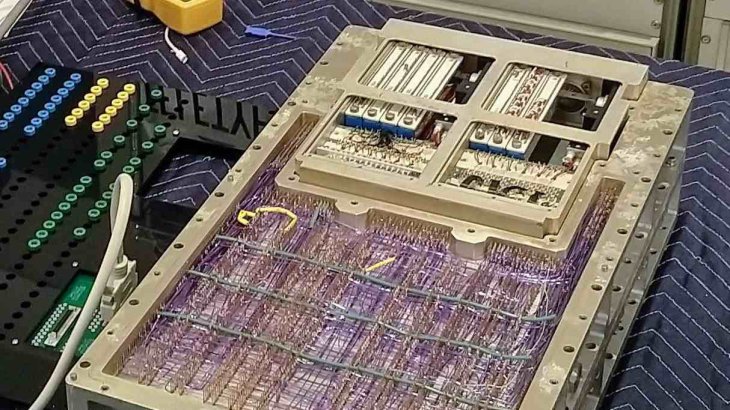It Would Take This NASA Computer Over A Quintillion Years To Mine One Bitcoin Block
Dhir Acharya - Jul 22, 2019

In his latest project, this computer enthusiast tried to mine bitcoin with a 50-year-old computer that took NASA to the Moon.
- Receive Buffers And Other Tips To Improve Your Internet Connection
- Bitcoin Broke Record Again, Hitting An All-Time High Of $50,000
- This Trackball Contains All Of Its Electronics Inside
As a hardware enthusiast, Ken Shirriff has a special interest in old computers. In his recent project, he restored a computer used by NASA for rocket guidance from the Apollo-era. And he tried to use it to mine Bitcoin.
Before this, Shirriff worked with various vintage computers which included the Xerox used by Steve Jobs as inspiration for the Macintosh, and the IBM punch card mainframe, etc.
In this project, he worked on an AGC (Apollo Guidance Computer), which was one of the first computers to house integrated circuits. Hence, different from other computers at the time which was as large as a room, this AGC could fit into a box measuring a couple of feet across.

The AGC had around 5,600 electronic gates allowing it to perform over 40,000 simple mathematical additions per second. Though it sounds paltry now, it was enough to get the Apollo into space back in 1966, helping NASA control the vehicles in real-time and allowing them to survive a blastoff.
Since Shirriff doesn’t intend to fly to the Moon, he tested the prowess of the AGC by reprogramming it to mine Bitcoin. And while he managed to do the task, the computer won’t help him become a billionaire in anytime soon.
Mining Bitcoin is no piece of cake. To keep the system decentralized, Bitcoin uses blocks which store data about all cryptocurrency transactions since day one. Each block is formed or mined every 10 minutes, and to claim it involves some luck with computers competing.

For this to be done, computers produce hashes, which are random number sequences, until they obtain the right one. More computing power dedicated to this task means more hashed you get and, of course, a higher chance of winning. And winning means you can mine the next block, and you get the Bitcoin value during the process. Currently, that reward is 12,5 BTC, equal to Rs 29.6 lakh.
However, on average, there are now more than 70 million trillion hashes conducted cross the world’s Bitcoin network. And a Rs 5,000 bitcoin miner can produce around 130 billion hashes per second.
And the AGC produces one hash in more than 10 seconds.
So after calculations, Shirriff found that the AGC would need an average of 4x10^23 seconds to find a block. This number is a billion times the universe’s age – 13.8 billion years.
Shirriff can still get lucky and the next hash may get himself some Bitcoin, though it’s unlikely. Anyway, the pure goal of his project is just to get old computers to work.
Featured Stories

Features - Jul 01, 2025
What Are The Fastest Passenger Vehicles Ever Created?

Features - Jun 25, 2025
Japan Hydrogen Breakthrough: Scientists Crack the Clean Energy Code with...

ICT News - Jun 25, 2025
AI Intimidation Tactics: CEOs Turn Flawed Technology Into Employee Fear Machine

Review - Jun 25, 2025
Windows 11 Problems: Is Microsoft's "Best" OS Actually Getting Worse?

Features - Jun 22, 2025
Telegram Founder Pavel Durov Plans to Split $14 Billion Fortune Among 106 Children

ICT News - Jun 22, 2025
Neuralink Telepathy Chip Enables Quadriplegic Rob Greiner to Control Games with...

Features - Jun 21, 2025
This Over $100 Bottle Has Nothing But Fresh Air Inside

Features - Jun 18, 2025
Best Mobile VPN Apps for Gaming 2025: Complete Guide

Features - Jun 18, 2025
A Math Formula Tells Us How Long Everything Will Live

Features - Jun 16, 2025
Comments
Sort by Newest | Popular